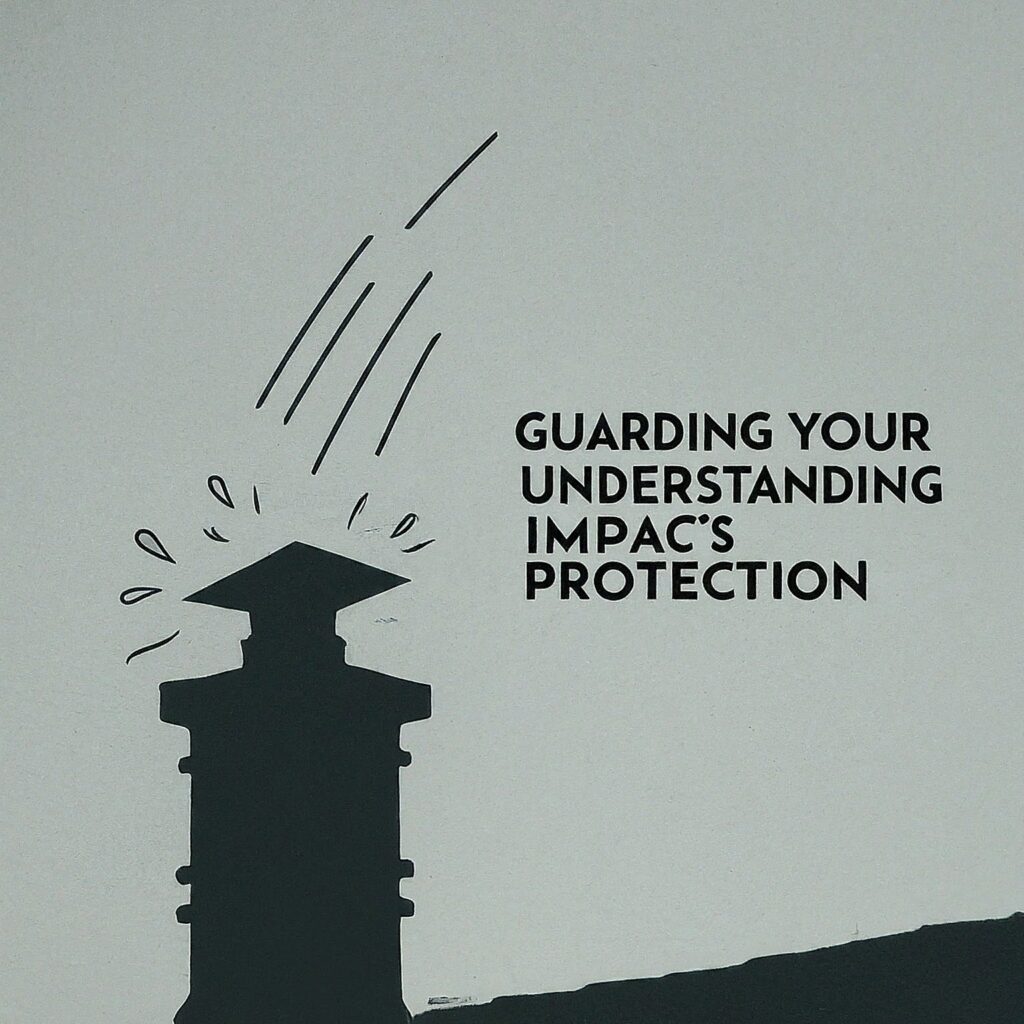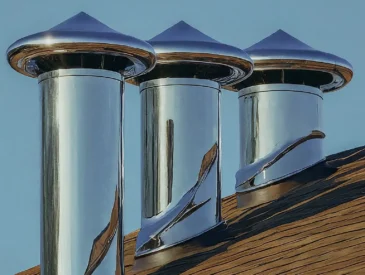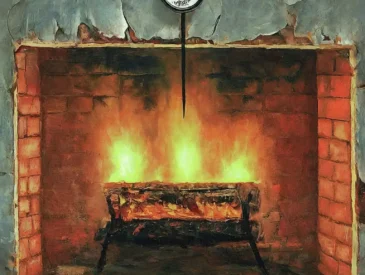The last thing you want is a part of your home catching fire. Flues are used to exhaust fumes and smoke from your fireplace. Since they’re so near to actual flames, you might wonder, can a flue catch fire?
A flue can catch fire when it isn’t properly maintained. Over time, creosote and soot build up inside the flue. The buildup becomes combustible when the temperature becomes hot enough inside the flue.
Creosote will unavoidably build up inside a flue. However, you can slow down the buildup and regularly clean the flue to prevent fires.
Preventing Flue Fires Understanding the Risks
Maintaining the fireplace and chimney is your best method of preventing fire. The flue, the part of the chimney that exhausts smoke, becomes coated in creosote, where chimney fires begin. How does this happen? How can it be prevented? This guide will explain all that and more.
Can A Flue Catch Fire?
A flue can catch fire if there’s too much creosote build-up. Creosote is a combustible substance that accumulates inside the flue. It’s a by-product of smoke, flames, and ash and can easily combust, setting the flue on fire.
Home fires happen for various reasons, but improperly cleaned chimneys are the main culprit. According to the National Fire Protection Association (NFPA), one in seven house fires was caused by heating appliances (including fireplaces and chimneys) between 2014–2018.
A well-maintained flue isn’t likely to catch fire. This is because the materials used to make a flue are resistant to heat and flames. A flue is made from metal or clay liners with refractory mortar. Although both are heat and flame-resistant, they can still catch fire if they aren’t cleaned.

Metal Flue vs. Clay Flue: Key Differences
| Metal Flue | Clay Flue |
|---|---|
| Made of metal | Made of clay |
| Highly resistant to heat and flames | It can be more fragile and may require more frequent inspections |
| Durable and long-lasting | Can be more fragile and may require more frequent inspections |
Understanding these differences can help in choosing the right type of flue for your fireplace and ensuring it’s properly maintained to prevent potential fire hazards.
What Causes A Flue Fire?
The primary cause of flue fires is creosote buildup. While creosote is a natural byproduct of fireplace use, it becomes a hazard when not regularly cleaned. This highly combustible substance forms from wood oils, smoke, and moisture in the chimney.
Over time, it accumulates on the flue’s walls, transforming into a tar-like material that can catch fire when exposed to high heat. Even a small amount of heat can ignite creosote due to its high flammability.
Detecting a Flue Fire
A flue fire can be identified by distinct signs such as popping noises, a strong heat odor, and thick smoke emerging from the chimney’s top. Initially, a flue fire might go unnoticed, as it could burn slowly or be confined to a specific section of the flue.
However, it weakens the flue lining, making subsequent fires more dangerous. Cracks in the flue or chimney masonry could be indicators of a previous flue fire. If left untreated, these cracks may allow future fires to spread beyond the flue, potentially causing severe damage or danger.
Preventing Flue Fires
Regular maintenance, including cleaning, inspections, and necessary repairs, is crucial for preventing flue fires. By keeping creosote buildup to a minimum, the risk of combustion and flue fires is significantly reduced.
Since flue fires can often start unnoticed, regular inspections and cleanings are essential to monitor the flue’s condition. It’s recommended to have a chimney inspected and cleaned annually, during which professionals can evaluate for excessive creosote accumulation and any flue wear.
Prompt repairs and maintenance recommendations from the inspector contribute to maintaining the flue’s condition and preventing creosote buildup.
Preventing Creosote Build-Up
To slow down creosote buildup, which is exacerbated by smoke and moisture, it’s advisable to use seasoned logs and maintain proper airflow in the fire. Here are five tips to help minimize creosote accumulation:
1. Use seasoned logs: Dry logs burn cleaner, producing less smoke and reducing creosote buildup.
2. Ensure airflow: Fully open the damper to enhance airflow, leading to more efficient burning and less smoke production.
3. Avoid artificial logs: Regular logs produce fewer byproducts than artificial ones, reducing creosote buildup.
4. Burn hot: Position logs to allow good airflow, resulting in a hotter burn. A fireplace grate can improve airflow.
5. Schedule regular cleaning: Since some creosote buildup is inevitable, maintain a consistent schedule for cleaning and inspections.
When to Schedule a Chimney Cleaning
Typically, fireplaces should be cleaned and inspected annually. If you observe creosote buildup exceeding 1/8th of an inch, it’s time to schedule a cleaning.
Creosote changes over time, evolving from a black flaky substance to a tar-like material. Prompt removal makes cleaning more effective and ensures the flue remains in good condition.





